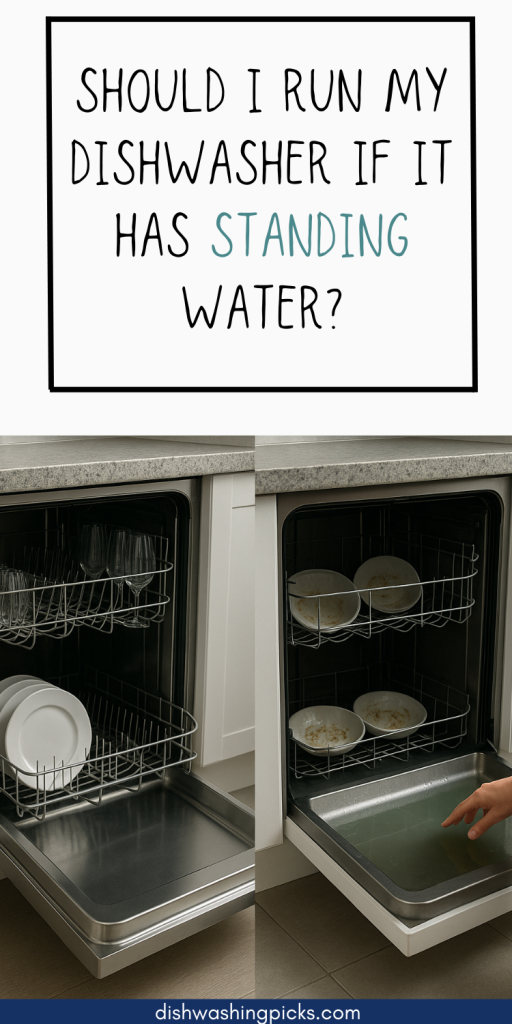
Wait… There’s Water at the Bottom?
You open your dishwasher, expecting that satisfying clean sparkle and maybe even that fresh lemon scent. Instead? You’re greeted by a pool of standing water staring back at you like, “Hey, did we forget something?”
So now you’re wondering: “Should I run the dishwasher anyway? Maybe it’ll drain itself?” Short answer? Nope. Long answer? Let’s break it down.
Standing Water Isn’t Just “Leftover”
First off—don’t panic. A bit of water under the filter after a wash cycle is totally normal. Dishwashers usually leave behind about an inch of water to prevent the pump from drying out. But if you’re seeing a noticeable pool covering the bottom, sloshing around like a tiny dishwater lake… yeah, that’s not part of the design.
And no, rerunning the cycle won’t solve it. It’s kind of like trying to dry a wet towel by dunking it in more water. You need to figure out what’s causing the clog before hitting start again.
What’s Actually Going On?
Let’s get real—standing water usually means there’s a drainage issue. Could be something simple or a little more “call-the-plumber” level.
Here’s what might be happening:
- Clogged Filter: Food bits, grease, even paper labels from jars can block your dishwasher’s filter.
- Blocked Drain Hose: Kinks or clogs in the drain hose can cause backups.
- Garbage Disposal Issues: If your dishwasher drains into your garbage disposal, a clogged disposal can cause water to back up.
- Faulty Drain Pump: If the pump’s busted, no amount of button pressing will fix it.
- Improper Installation: If it’s a newer dishwasher, the hose might not be looped correctly, causing drainage issues.
Sound technical? Don’t worry, we’re getting to the part where you can actually do something.
Try This Before Calling for Backup
Okay, here’s what you can try first. No need to grab a wrench just yet.
1. Check the Filter
Imagine this: Your filter is like your dishwasher’s trash can. If it’s overflowing, everything else backs up. Pull it out (usually a simple twist or lift), give it a rinse under warm water, and get any gunk out. You might be surprised what’s living in there.
2. Inspect the Drain Hose
Take a peek under the sink. Is the hose kinked? Flattened? If it looks squashed or bent at an awkward angle, that could be your culprit. Try gently straightening it.
3. Run a Rinse Cycle Without Dishes
Once you’ve cleaned things up, run a quick rinse cycle and watch what happens. If the water disappears? You nailed it. If not, don’t keep cycling and hoping for magic—on to plan B.
So, Should You Run It With Standing Water?
Let’s circle back to your original question.
Running a dishwasher with standing water won’t help. In fact, it might actually make things worse—spilling water onto your kitchen floor, damaging your pump, or trapping more food gunk in your dishes.
If the issue persists after a basic clean-up, it’s best to pause, breathe, and consider calling in a pro. Think of it like this: a dishwasher is a helpful friend, but even helpful friends need a little TLC when they’re not feeling their best.
Take the Hint Before You Hit Start
Standing water in your dishwasher isn’t just annoying—it’s your machine’s way of saying, “Hey, something’s up.” Don’t ignore it. A quick inspection might save you from a bigger mess later on.
So next time you spot a puddle, channel your inner detective. Check the filter. Peek under the sink. And if you need to, call in reinforcements. Better that than spending the next day with a mop and a regret-filled stare.
